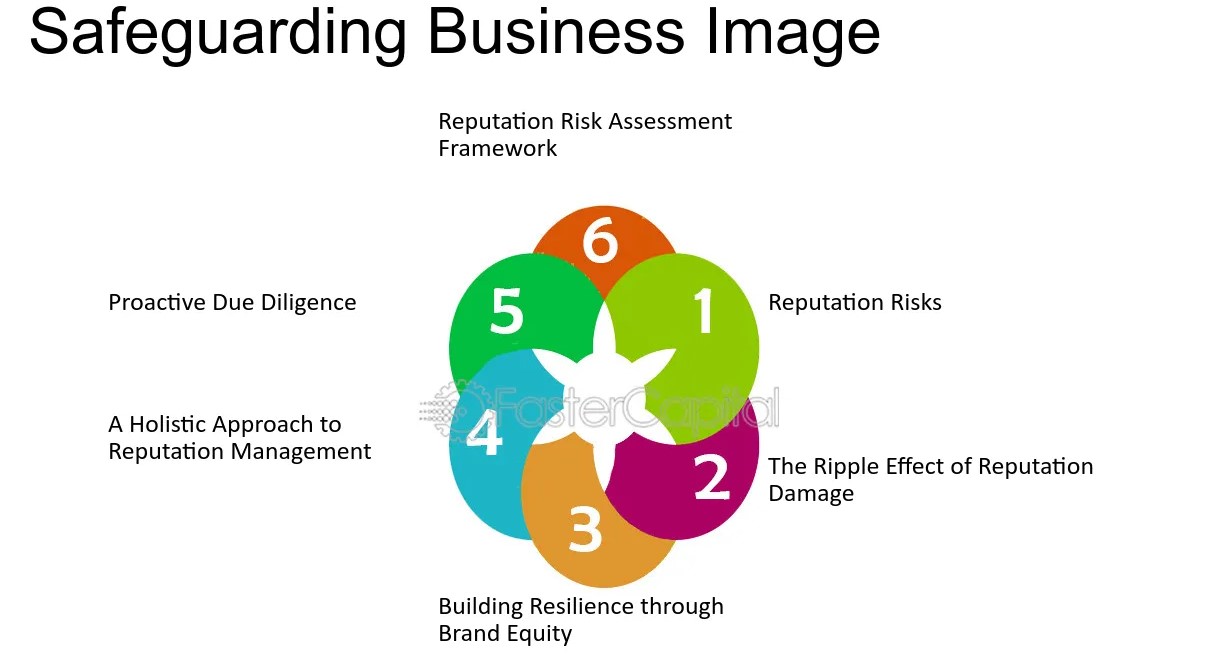Business
Top Tips for Safeguarding Your Business Communications

Welcome to our blog post on the top tips for safeguarding your business communications! In today’s digital age, where information travels at lightning speed and cyber threats are lurking around every corner, it has become more crucial than ever to ensure the security of your company’s communication channels. Whether it’s sensitive client data or confidential internal discussions, protecting your business communications is paramount to maintaining trust and integrity in the modern marketplace.
But why exactly is safeguarding business communications so important? And what are some common attacks that exploit the human element of communication? In this article, we’ll delve into these questions and provide you with effective strategies for ensuring secure interactions within your organization. So let’s dive right in and explore how you can fortify your communication infrastructure against potential threats.
The Importance of Safeguarding Business Communications
In today’s fast-paced and interconnected business world, effective communication is the lifeblood of any successful organization. It enables collaboration, fosters innovation, and keeps stakeholders informed. However, with the increasing digitization of business processes comes a heightened risk of cyber threats that can compromise the security of your communications.
The importance of safeguarding your business communications cannot be overstated. Imagine a scenario where sensitive client information falls into the wrong hands or confidential strategies are leaked to competitors. The consequences could be catastrophic, leading to financial losses, reputational damage, and even legal implications.
One major factor contributing to the vulnerability of business communications is human error. Cybercriminals often exploit this weak link in an organization’s security chain through tactics like phishing emails and social engineering scams. These attacks prey on unsuspecting employees who may inadvertently disclose sensitive information or click on malicious links.
By implementing robust security measures for your communication channels, you can significantly reduce these risks. Start by using secure email protocols such as Transport Layer Security (TLS) encryption to protect email exchanges between your company and external parties. Encrypting data ensures that it remains unreadable even if intercepted by unauthorized individuals.
Another essential aspect is training employees about the various types of cyber threats they might encounter and how to recognize them effectively. Regular cybersecurity awareness programs will help educate staff about best practices for identifying suspicious emails or phone calls so they can avoid falling victim to social engineering attacks.
Investing in advanced technologies powered by machine learning (ML) and artificial intelligence (AI) can also play a crucial role in safeguarding your business communications against evolving threats. ML algorithms analyze patterns in communication data to detect anomalies indicative of potential breaches or fraudulent activities.
To further enhance security measures within your organization, consider implementing multi-factor authentication (MFA) for accessing critical systems or sensitive information. MFA adds an extra layer of protection by requiring users to provide multiple forms of identification before granting access.
Common Attacks Exploiting the Human Element
The human element is often the weakest link when it comes to safeguarding business communications. Attackers know this and exploit it through various common attacks. Let’s take a closer look at some of these tactics and how you can protect your business.
One common attack is phishing, where attackers send emails or messages pretending to be from a trusted source in order to trick employees into divulging sensitive information or clicking on malicious links. These emails are often crafted to appear legitimate, making them difficult to spot. It’s crucial for employees to be vigilant and never click on suspicious links or provide personal information without verifying the sender.
Another tactic is spear phishing, which takes phishing a step further by targeting specific individuals within an organization. Attackers gather personal information about their targets through social media profiles or other means, making their messages even more convincing. Employees should be cautious when receiving unexpected messages, especially if they include personalized details that only someone with insider knowledge would know.
Social engineering is yet another method used by attackers to manipulate people into revealing confidential information or performing actions that compromise security protocols. This can involve impersonating authority figures like managers or IT personnel or using psychological manipulation techniques to gain trust and compliance. Regular training sessions can help employees recognize these tactics and respond appropriately.
Smishing (SMS phishing) and vishing (voice phishing) are also prevalent forms of attack that exploit the human element through text messages and phone calls respectively. Similar principles apply: users must exercise caution when responding to unsolicited communication requests, especially those requesting sensitive data such as passwords or account numbers.
Attackers may also resort to baiting by leaving infected USB drives in public places with enticing labels like “Confidential” or “Employee Salaries”. Curiosity gets the better of unsuspecting victims who plug these drives into company computers, unknowingly introducing malware into their systems. Constant reminders about not using unverified devices should keep your team on guard against this ploy.
Using ML and AI to Defeat Social Engineering Attacks
In today’s interconnected world, social engineering attacks have become a major concern for businesses of all sizes. These malicious tactics involve manipulating individuals into divulging sensitive information or taking actions that can compromise the security of business communications. To combat this growing threat, organizations are turning to advanced technologies like machine learning (ML) and artificial intelligence (AI) for safeguarding their networks and protecting against social engineering attacks.
ML and AI offer powerful tools in the fight against social engineering attacks. By analyzing patterns in communication data, these technologies can identify suspicious behaviors or unusual requests that may indicate an attempted attack. ML algorithms can learn from past incidents and continuously improve their ability to detect new methods used by attackers.
One common type of social engineering attack is phishing, where cybercriminals attempt to trick individuals into revealing confidential information through fraudulent emails or messages. ML-powered email filters can analyze incoming messages, flagging suspicious content or attachments that may contain malware or phishing attempts. This helps protect employees from falling victim to these deceptive techniques.
Another effective use case for ML and AI is detecting voice spoofing during phone calls. Voice recognition technology combined with ML algorithms can analyze various vocal characteristics like tone, pitch, rhythm, etc., enabling systems to differentiate between genuine callers and imposters attempting voice-based scams.
Additionally, ML-powered chatbots are being utilized by businesses as virtual assistants capable of handling customer queries securely. These intelligent bots not only provide accurate responses but also employ natural language processing capabilities to identify potential manipulative tactics used by fraudsters who try to extract sensitive information from unsuspecting customers.
By leveraging the power of ML and AI technologies in combination with robust cybersecurity measures such as encryption protocols and multi-factor authentication systems, organizations can significantly enhance their defenses against social engineering attacks on business communications.
As threats continue to evolve rapidly in the digital landscape, staying one step ahead requires adopting proactive measures like implementing cutting-edge security solutions. By embracing ML and AI technologies, businesses can bolster their security posture and ensure
Strategies for Ensuring Secure Business Communications
1. Implement a robust email security system: Email is one of the most common channels through which cyber attackers target businesses. To safeguard your business communications, it’s crucial to invest in a reliable email security system. This can help filter out malicious emails, detect phishing attempts, and prevent unauthorized access to sensitive information.
2. Use strong encryption methods: Encryption is an essential tool for securing your business communications. By encrypting data before sending it over networks or storing it in the cloud, you add an extra layer of protection against unauthorized access. Make sure to use strong encryption algorithms and regularly update them to stay ahead of potential threats.
3. Train employees on cybersecurity best practices: The human element remains one of the weakest links when it comes to business communication security. Conduct regular training sessions to educate your employees about potential cyber threats and how they can actively contribute to maintaining secure communication channels. Teach them about password hygiene, identifying suspicious emails or links, and how social engineering attacks work.
4. Implement multi-factor authentication (MFA): MFA adds an extra layer of security by requiring users to provide multiple forms of identification before accessing sensitive data or systems. Enforce MFA across all communication platforms used within your organization be it email clients. Messaging apps, or virtual meeting software to minimize the risk of unauthorized access.
5. Regularly update software and devices: Outdated software and devices are more susceptible to attacks as they may have known vulnerabilities that hackers can exploit easily. Keep all software applications up-to-date with the latest patches and updates provided by vendors promptly.
6.Implement strict access controls: Limiting access privileges based on job roles helps ensure that only authorized individuals have permission to view or modify certain information within your organization’s communication systems.
Enforcing least privilege principles can significantly reduce the likelihood of accidental data leaks or intentional breaches caused by insiders.
By implementing these strategies for ensuring secure business communications, you can significantly reduce. The risks associated with cyber threats and protect your organization
Stay Updated with Our Newsletter for Pro Tips
Staying on top of the ever-evolving landscape of secure business communications can be a daunting task. That’s why it’s essential to stay informed and educated about the latest threats, vulnerabilities, and best practices in this field. By subscribing to our newsletter. You’ll gain access to valuable pro tips that will help you safeguard your business communications effectively.
Our experts are constantly researching and analyzing emerging trends, new attack vectors, and advanced security solutions. With their guidance, you’ll learn how to identify and mitigate potential risks before they can cause any harm. From practical advice on implementing strong passwords. And multi-factor authentication to staying vigilant against phishing attempts or social engineering attacks – our newsletter covers it all.
By subscribing today, you’ll receive regular updates delivered directly to your inbox. You won’t have to spend hours scouring the web for reliable information. Or worry about missing out on crucial insights that could protect your organization from cyber threats. Our goal is simple: empower businesses like yours with the knowledge they need to enhance their communication security posture.
Don’t let complacency leave your business exposed! Sign up for our newsletter now and equip yourself with the tools necessary for defending. Against evolving cybersecurity threats in an increasingly digital world.
When it comes to securing your business communications, knowledge is power! Stay updated with our expert advice by subscribing today. Together, we can build a more secure future for your organization.
Business
Coomersu: The New Era of Commerce and User Engagement

Introduction
In today’s fast-paced and ever-evolving global marketplace, businesses are constantly on the lookout for innovative strategies to stay ahead of the competition. One such groundbreaking concept that has emerged is Coomersu—a dynamic fusion of commerce and user engagement that is reshaping the way companies interact with their customers. This article will explore the essence of Coomersu, its significance, applications, and the myriad benefits it offers in the contemporary business landscape.
What is Coomersu?
Coomersu is a portmanteau of “commerce” and “user,” reflecting a revolutionary approach that emphasizes the integration of user-centric strategies within commercial enterprises. Unlike traditional commerce models that focus primarily on transactions, Coomersu is centered around building robust relationships with customers. It involves creating memorable experiences, fostering loyalty, and driving meaningful interactions.

The Evolution of Commerce
Historical Context of Commerce
Commerce has come a long way from its rudimentary beginnings in bartering and simple trade. Over centuries, it has evolved through various stages—from local marketplaces to global e-commerce platforms. Traditional commerce was heavily transaction-focused, prioritizing the exchange of goods and services over customer experience.
How User Engagement Has Changed Over Time
As technology advanced and consumer expectations grew, businesses began to recognize the importance of engaging with users on a deeper level. The rise of digital platforms and social media has transformed how companies connect with their audience. Today, user engagement is not just about providing a service or product; it’s about creating a holistic experience that resonates with customers on an emotional and personal level.
Key Principles of Coomersu
User-Centric Strategies
At the heart of Coomersu is the principle of user-centricity. This approach involves tailoring strategies to meet the unique needs and preferences of customers. It goes beyond mere customer service to encompass a deeper understanding of user behavior, preferences, and feedback.
Building Relationships vs. Transactions
While traditional commerce focuses on completing transactions, Coomersu prioritizes building lasting relationships with customers. This shift from a transactional to a relational mindset helps businesses create a loyal customer base and drive repeat business.
Creating Memorable Experiences
Coomersu emphasizes the creation of memorable experiences that leave a lasting impression on customers. Whether through personalized interactions, exceptional service, or engaging content, the goal is to make every customer touchpoint meaningful and impactful.
The Benefits of Coomersu
Enhanced Customer Loyalty
One of the primary benefits of adopting Coomersu strategies is the enhancement of customer loyalty. By focusing on user engagement and relationship-building, businesses can foster a sense of loyalty among their customers, leading to higher retention rates and long-term success.
Improved Customer Satisfaction
Coomersu also leads to improved customer satisfaction. When customers feel valued and understood, they are more likely to have positive experiences and provide favorable feedback. This, in turn, enhances the overall reputation of the business.
Increased Brand Advocacy
Satisfied and loyal customers often become brand advocates, promoting the business through word-of-mouth and social media. Coomersu strategies help cultivate this advocacy by ensuring that customers have exceptional experiences worth sharing.
Applications of Coomersu
E-commerce Platforms
In the realm of e-commerce, Coomersu can be applied through personalized shopping experiences, tailored recommendations, and interactive customer support. E-commerce platforms that leverage Coomersu principles can create more engaging and user-friendly environments.
Retail Experiences
For brick-and-mortar stores, Coomersu involves creating immersive and personalized shopping experiences. This can include interactive displays, personalized service, and loyalty programs that enhance the overall in-store experience.
Digital Marketing Strategies
Coomersu principles can also be integrated into digital marketing strategies. This includes personalized content, targeted advertisements, and interactive campaigns that resonate with users and drive engagement.
Implementing Coomersu in Your Business
Steps to Adopt Coomersu Strategies
Adopting Coomersu strategies involves several key steps. Begin by understanding your target audience and gathering insights into their preferences and behaviors. Next, develop user-centric strategies that align with these insights and integrate them into your business operations.
Tools and Technologies for Effective Implementation
To effectively implement Coomersu, businesses can leverage various tools and technologies, such as customer relationship management (CRM) systems, data analytics platforms, and marketing automation tools. These technologies help streamline user engagement efforts and provide valuable insights into customer interactions.
Challenges in Adopting Coomersu
Potential Obstacles
While the benefits of Coomersu are significant, businesses may encounter challenges in its adoption. These challenges can include resistance to change, resource constraints, and difficulties in implementing new technologies.
Solutions to Overcome These Challenges
To overcome these challenges, businesses should focus on gradual implementation, invest in training and development, and seek expert guidance if needed. Building a culture of user-centricity within the organization can also help address resistance and drive successful adoption.
Case Studies of Coomersu in Action
Successful Examples from Various Industries
Several businesses have successfully adopted Coomersu strategies and reaped the rewards. For example, companies in the retail and e-commerce sectors have seen significant improvements in customer loyalty and satisfaction by implementing personalized and engaging experiences.
Lessons Learned and Best Practices
From these case studies, businesses can learn valuable lessons and identify best practices for implementing Coomersu. Key takeaways include the importance of understanding user needs, leveraging technology effectively, and maintaining a focus on relationship-building.
The Future of Coomersu
Emerging Trends and Innovations
The future of Coomersu is likely to be shaped by emerging trends and innovations. Advances in artificial intelligence, machine learning, and data analytics will further enhance user engagement and personalization capabilities.
Predictions for the Evolution of User-Centric Commerce
As Coomersu continues to evolve, we can expect an increased emphasis on hyper-personalization, seamless omnichannel experiences, and greater integration of user feedback into business strategies.
Conclusion
Coomersu represents a transformative shift in commerce, emphasizing the importance of user engagement and relationship-building. By adopting Coomersu principles, businesses can enhance customer loyalty, improve satisfaction, and drive long-term success. As we move forward, embracing this user-centric approach will be crucial for staying competitive in the ever-changing marketplace.
FAQs
What exactly is Coomer’su?
Coomer’su is a concept that combines commerce with user engagement, focusing on building relationships, creating memorable experiences, and fostering customer loyalty.
How can Coomer’su benefit my business?
Coomer’su can benefit your business by enhancing customer loyalty, improving satisfaction, and increasing brand advocacy through user-centric strategies and personalized interactions.
What are the key challenges in implementing Coomer’su?
Key challenges in implementing Coomer’su include resistance to change, resource constraints, and difficulties in integrating new technologies. Addressing these challenges requires gradual implementation, training, and a focus on user-centricity.
Can small businesses adopt Coomer’su strategies?
Yes, small businesses can adopt Coomer’su strategies by focusing on understanding their customers, leveraging affordable tools and technologies, and implementing user-centric practices within their operations.
What are some real-world examples of Coomer’su?
Real-world examples of Coomer’su include personalized shopping experiences in e-commerce, interactive retail displays, and targeted digital marketing campaigns that engage users and enhance their overall experience.
Business
Is Shein Shutting Down? Latest Updates

Introduction
Shein’s Current Status
Recent headlines have sparked curiosity and concern among Shein’s vast customer base. Despite the buzz, it’s crucial to differentiate between speculation and verified information. As of the latest updates, Shein has not officially announced any plans to shut down. The company continues to operate its online platform and retail activities globally. Statements from Shein’s management indicate that while there are challenges, there is no immediate plan for closure.
Reasons Behind the Speculation
Several factors have fueled the speculation about Shein’s potential shutdown:
- Financial Issues: Shein, like many businesses, faces financial pressures, including rising costs and fluctuating revenues. However, financial challenges are common in the retail sector and do not necessarily indicate an impending shutdown.
- Market Competition: The fashion industry is highly competitive, with numerous brands vying for consumer attention. Shein faces stiff competition from both established and emerging brands, which can contribute to market rumors.
- Supply Chain Challenges: Disruptions in the global supply chain have affected many businesses, including Shein. These disruptions can lead to delays and increased costs, fueling speculation about the company’s stability.
Shein’s Business Model
Shein’s success can be attributed to its innovative business model, which focuses on fast fashion. The company is known for its rapid production cycles and extensive inventory, allowing it to offer the latest trends at competitive prices. Shein’s global reach, with its online presence spanning multiple countries, has cemented its position in the fashion industry. Understanding Shein’s business model provides context for the challenges it faces and the speculations surrounding its future.
Consumer Reactions
Consumers play a vital role in Shein’s brand image and success. The recent rumors of a potential shutdown have led to mixed reactions among Shein’s customers. While some are concerned about losing access to their favorite fashion pieces, others are skeptical of the rumors, viewing them as part of the industry’s natural ups and downs. The impact on consumers also includes potential shifts in shopping habits and brand loyalty.
Industry Experts’ Opinions
Fashion industry experts and analysts offer various perspectives on Shein’s situation. Some believe that Shein’s strong market position and innovative strategies will help it navigate current challenges. Others are cautious, noting that the fashion industry’s volatility can be unpredictable. Expert opinions provide valuable insights into the possible scenarios for Shein’s future, highlighting both opportunities and risks.
Impact on the Fashion Industry
The potential closure of a major player like Shein could have broader implications for the fashion industry. Shein’s departure might affect fast fashion trends, pricing dynamics, and consumer behavior. The industry could see shifts in market share, with other brands potentially filling the void left by Shein. Understanding these potential impacts helps in grasping the broader significance of the current rumors.
What’s Next for Shein?
While the future of Shein remains uncertain, several scenarios could play out. The company might adapt to challenges by restructuring its business model, exploring new markets, or enhancing its supply chain. Monitoring Shein’s strategic moves and official announcements will be crucial in understanding its trajectory. Staying informed about these developments can provide insights into the brand’s future.
How to Stay Informed
To keep up with the latest updates on Shein, it’s essential to rely on credible sources. Follow news from reputable fashion publications, official Shein announcements, and industry reports. Social media platforms and Shein’s own channels can also offer timely information. Being proactive in seeking reliable updates ensures that you stay informed about Shein’s status.
Conclusion
In summary, while rumors about Shein shutting down have generated significant interest, there is no confirmed information about the company’s closure. Shein continues to operate amidst various challenges, and its future will depend on how it addresses these issues. By staying informed and understanding the broader context, you can better navigate the evolving situation with Shein.
FAQs
Is Shein definitely shutting down?
As of now, Shein has not confirmed any plans to shut down. The company continues to operate, and the rumors are speculative.
What are the main reasons behind the rumors?
The rumors are fueled by financial pressures, market competition, and supply chain challenges faced by the company.
How can I stay updated on Shein’s status?
Follow news from reputable sources, Shein’s official channels, and industry reports for the latest updates.
What should customers do if Shein closes?
If Shein closes, customers should seek alternative fashion retailers and monitor any official announcements for guidance on returns or outstanding orders.
Will Shein’s closure affect other fast fashion brands?
Yes, Shein’s closure could impact the fast fashion sector, potentially altering market dynamics and consumer behavior.
Business
How defstartup.org Empowers Startups to Thrive and Innovate

Introduction
In today’s fast-paced economy, startups play a crucial role in driving innovation and economic growth. However, the journey from an idea to a thriving business is fraught with challenges. This is where defstartup.org comes into play, offering indispensable resources, funding opportunities, mentorship, and networking events that empower startups to thrive and innovate. Let’s explore how this platform is transforming the startup ecosystem.
The Mission of defstartup.org

At its core, defstartup.org is dedicated to fostering innovation and entrepreneurship. The platform’s vision is to create a supportive ecosystem where startups can access the resources and guidance they need to succeed. By focusing on innovation-driven ventures, defstartup.org aims to contribute to economic growth, job creation, and industry transformation.
Comprehensive Resources for Startups
Startups need access to a variety of resources to navigate the complexities of business development. defstartup.org provides a wealth of resources, including educational materials, business tools, and industry insights. These resources are designed to help startups at every stage of their journey, from ideation to scaling.
Funding Opportunities
One of the biggest hurdles for startups is securing funding. defstartup.org offers a range of funding options, including grants, loans, and investment opportunities. Success stories abound of startups that have received funding through the platform, demonstrating its effectiveness in helping entrepreneurs turn their visions into reality.
Mentorship and Guidance
Mentorship is a critical component of the startup journey. defstartup.org connects entrepreneurs with experienced mentors who provide invaluable guidance and support. These mentors help startups navigate challenges, make informed decisions, and accelerate their growth.
Networking Events
Networking is essential for startups to build relationships, gain exposure, and find opportunities for collaboration. defstartup.org hosts a variety of networking events, including conferences, workshops, and meetups. These events provide a platform for entrepreneurs to connect with peers, investors, and industry experts.
Empowering Innovation-Driven Ventures
Innovation is the lifeblood of the startup ecosystem. defstartup.org supports a wide range of innovative startups, from tech companies to social enterprises. By providing the necessary resources and support, the platform helps these ventures bring their groundbreaking ideas to market and drive industry transformation.
Economic Growth and Job Creation
Startups are powerful engines of economic growth and job creation. By supporting startups, defstartup.org contributes to the broader economy. The platform’s efforts lead to the creation of new businesses, which in turn generate employment opportunities and stimulate economic activity.
Industry Transformation
The impact of startup innovation on industry transformation cannot be overstated. defstartup.org has supported numerous startups that have disrupted traditional industries and introduced new ways of doing business. These case studies highlight the long-term effects of startup innovation on various sectors.
Navigating Challenges in Entrepreneurship
The path to entrepreneurial success is rarely smooth. Startups face numerous challenges, including funding shortages, market competition, and operational hurdles. defstartup.org provides solutions and support to help startups overcome these challenges, ensuring they have the best chance of success.
Seizing Opportunities for Growth
Growth opportunities abound for startups, but identifying and leveraging them requires strategic planning and execution. defstartup.org helps startups recognize these opportunities and provides the tools and support needed to seize them. This proactive approach is crucial for startups looking to scale and achieve long-term success.
Sustainable Growth in the Competitive Landscape
Sustainable growth is the key to long-term success in the competitive startup landscape. defstartup.org offers strategies and resources to help startups achieve sustainable growth. This includes guidance on business development, market expansion, and operational efficiency.
Global Impact of defstartup.org
The influence of defstartup.org extends beyond national borders. The platform plays a significant role in the global startup ecosystem, supporting entrepreneurs from around the world. As defstartup.org continues to evolve, its impact on the global economy and innovation landscape will only grow.
Conclusion
In conclusion, defstartup.org is a game-changer for startups. By providing essential resources, funding opportunities, mentorship, and networking events, the platform empowers startups to thrive and innovate. Its contributions to economic growth, job creation, and industry transformation are profound, shaping the future of innovation and entrepreneurship on a global scale.
FAQs
How can startups access the resources provided by defstartup.org?
Startups can access resources by registering on the defstartup.org platform and exploring the various tools and materials available.
What types of funding opportunities are available through the platform?
The platform offers a range of funding options, including grants, loans, and investment opportunities tailored to different stages of startup development.
How does defstartup.org select mentors for startups?
Mentors are selected based on their industry experience, expertise, and ability to provide valuable guidance to startups in their respective fields.
What industries benefit the most from the support of defstartup.org?
While supports a wide range of industries, tech startups, social enterprises, and innovation-driven ventures benefit significantly from the platform’s resources and support.
How can entrepreneurs participate in networking events hosted by defstartup.org?
Entrepreneurs can participate in networking events by registering on the platform and signing up for upcoming conferences, workshops, and meetups.
-

 Fashion2 years ago
Fashion2 years agoExploring Purenudism: Embracing Body Positivity and Freedom
-

 Shops1 year ago
Shops1 year agoStaples Store Hours: What Time Does Staples Open And Close?
-

 Shops2 years ago
Shops2 years agoWalmart Vision Center Hours
-

 Shops1 year ago
Shops1 year agoWalgreen Pharmacy Hours: What Time Does It Open & Close?
-

 Shops1 year ago
Shops1 year agoPublix Pharmacy Hours and Locations
-

 Entertainment2 years ago
Entertainment2 years agoThothub.lol: The Digital Realm of Entertainment
-

 Business2 years ago
Business2 years agoDesigner Clothing: Making a Statement
-

 Shops1 year ago
Shops1 year agoWalmart Deli Open & Close Hours
